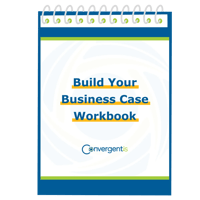We had such a great time speaking with SAP at the Inside SAP S/4HANA podcast, we had to make sure it wasn’t the last. That’s why our very own Shaun Syvertsen joined the panel on another SAP Fiori-side chat. In this edition, we dug a little bit deeper into how to use embedded Analytics and SAP Analytics Cloud (SAC) and some of our own experiences as an SAP partner and customer. With this unique perspective, we were able to share what we loved about these tools and what we learned from our own experiences.
This topic is very detailed, so we’ll admit we couldn’t capture everything within a single blog post. For more information, we encourage you to watch the full chat for answers to more specific questions about these tools.
Pull Up Your Embedded Analytics Quickly
No question, SAP’s Analytics tools are very powerful in use. However, in older versions of S/4HANA, unlocking these key performance indicators (KPI’s) took a little bit longer than you might expect. That’s why we were incredibly pleased with the semantics tags that were added in the 1709 release. Once you’ve applied your semantic tags to your financial statement, you have the ability to calculate a wide range of KPIs. These metrics can then be accessed on your mobile device like a smartphone. This means business leaders can access this information while on the go and make decisions accordingly. We would argue this update is nothing short of a “dash of magic”, as we’ve seen firsthand the improved speed at which we can extract data.
From the ConvergentIS perspective, we’ve really been excited about how the SAC product has matured. Earlier in 2020, we saw this product reach a maturity level where we thought it was ready for us, so we bought it and implemented it for ourselves. Now we can help our clients do the same. In Shaun’s brief demo, we encourage you to see firsthand how KPIs can be quickly accessed and configured using the gear icon to add dimensions that can be later saved right on your desktop. With the help of these semantics tags, you can have your own dashboards up and running on top of your current systems in as little as three days.
Implement SAC with Your C-Level and Executive Users in Mind
When it comes to implementing a new solution (like SAC), keep in mind value will need to be delivered quickly. With the added dimension of project length, the risk only increases. However, the panellists could all agree that by understanding the C-level users and targeting their needs first, the implementation will have the greatest chance of success.
If you make a user’s life easier, where they used to have to hunt for information, and you can do this quickly, your business can prove that not every project will take 9 months and 1 million dollars. This proves to users and the organization these implementations can be repeated with minimal disruption.
Similarly, to get started with Embedded Analytics, it is likely your business is already operating standard Analytics in your system and is unaware of the capabilities of the tool. This means a couple of days to explain the approach and the value-added to the business. The steps in exploration are matched with the end user’s needs, based on the C-Level Persona. It is important to note, this implementation is just as big as SAC since there are several pieces within the tool and should be considered as the sum of these parts.
It’s All About the Cohesive Experience
When comparing Embedded Analytics and SAC it can be hard to know which tools fit best with your business's current business processes. In a high-level comparison, embedded reporting looks at use cases, where SAC has the ability to blend non-SAP data with SAP data. The SAC tool is also known for using natural language in your queries and having a more visual component. While both have unique capabilities, depending on your UX strategy it is not uncommon to have both connected to your Fiori launchpad in a unified experience.
This is where the principle of coherence and simplicity has become increasingly prominent in the discussion. Within the ConvergentIS team, we have links to Office 365 and a couple of other tools we use including Analytics. Therefore, creating this cohesive experience is possible if there is consideration of how these pieces weave together. This interconnection considers how a user navigates to these tools and how they can navigate back to their home page once they have extracted what they need to. Putting all the tools in one place is just the first step in ensuring a positive user experience and continued adoption.
The ConvergentIS team is equipped to help your business deploy SAP Analytics Cloud.
Learn how this incorporates into your larger business strategy, by downloading our free Build Your Business Case workbook below.


